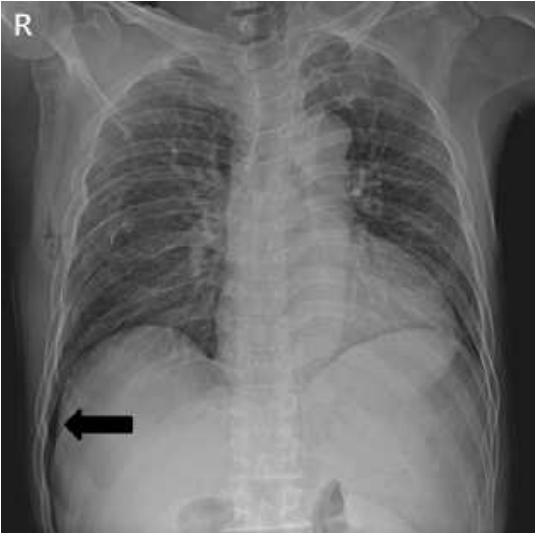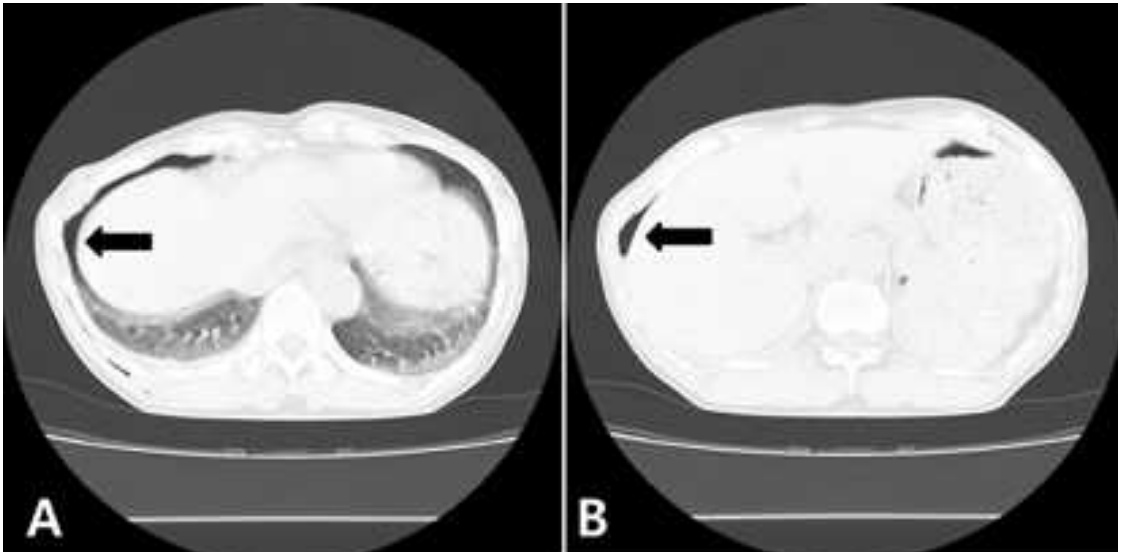CASE
A 56-year-old male pedestrian was brought to the emergency department after a high-speed road-traffic accident. He had transient hypotension and tachycardia, which improved after the administration of intravenous fluids. The physical examination revealed multiple orthopedic injuries in addition to trauma to the right chest, pelvis, and head. He underwent prompt intubation and sedation. Chest radiography with the patient in the supine position showed a deep sulcus sign (Fig. 1.), which was highly suggestive of a pneumothorax. Chest computed tomography confirmed a pneumothorax (Fig. 2.).










